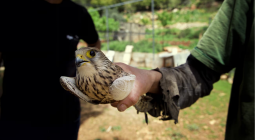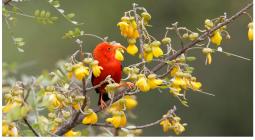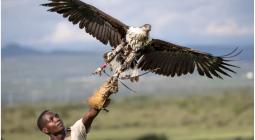Death toll for birds hitting buildings may be over 1 billion a year in US – report

Less than half of stunned or injured birds survive a collision with a window, research has found, pushing up estimates that more than 1 billion birds may die each year from flying into buildings in the US.
In a new study published on Wednesday in Plos One, researchers examined how many birds recovered in rehabilitative care after a building collision. Older estimates had assumed that most stunned birds would recover, but researchers found about 60% died, meaning the number killed by building strikes may be far higher than previously thought.
Ar Kornreich, a PhD candidate at Fordham University in New York City and the lead author of the study, said the yearly US mortality rate in birds was a tragedy, and the new research showed previous mortality estimates may not have captured the extent of the toll.
“Most studies that are published are done on birds – usually on impact – that are already dead,” Kornreich said. “The truth of the matter is there are many birds that collide and don’t immediately die.”
Glass window strikes are a leading cause of deaths for birds. Deaths from building collisions increase in autumn during migration periods and then summer when breeding occurs. As well as birds having difficulty distinguishing transparent windows from open air, scientists believe territorial behaviour in breeding season may contribute to rising collisions, as birds react to perceived threats in window reflections.
Brendon Samuels, a PhD candidate at the University of Western Ontario’s department of biology and a research coordinator for the Fatal Light Awareness Program (Flap), who was not involved with the research, said it showed cases had probably been “under-documented”.
“If the bird isn’t immediately killed, it doesn’t leave behind any evidence that a collision has taken place,” he said.
Samuels said glass in buildings and artificial light were the main contributors in the urban landscape to bird deaths, and there were ways to design buildings to minimise their effects.
“We’re aware of the risk to birds and we have solutions that can prevent this in the design of a new building,” he said. “We need more governments, especially local governments, to take up safe building design as a policy for new building construction.”
Building owners and residents “should treat your window, ideally by putting visual markers on the glass on the outside surface.” he said. He recommended glass murals or window markers rather than a few stickers, which were often ineffective. One Chicago study found that turning off lights at night resulted in between six and 11 times fewer bird strikes.
The study authors used Freedom of Information Act requests to retrieve records from eight US states on avian building-collision cases between 2016 and 2021.
Kornreich said many rescued birds did not recover, even with high-quality care after a collision – and they may go on to face further threats after release: “I was mostly struck by how only 40% of birds [survive]; even though they’re in the best of conditions and when humans really do care about their outcome, they are still faced with that mortality.”
They said more nuanced bird-injury data could make rehabilitation processes more robust and likely to succeed.
While the death toll was high, the scientists emphasised that 40% of stunned birds did survive, and encouraged people to take stunned birds to rehabilitation centres.
“Even when a bird does hit a building, it’s not necessarily over,” said Kornreich. “The more people that are aware that this is a serious problem, the more people, I hope, will feel the same kind of moral pull … to do something about it.”






